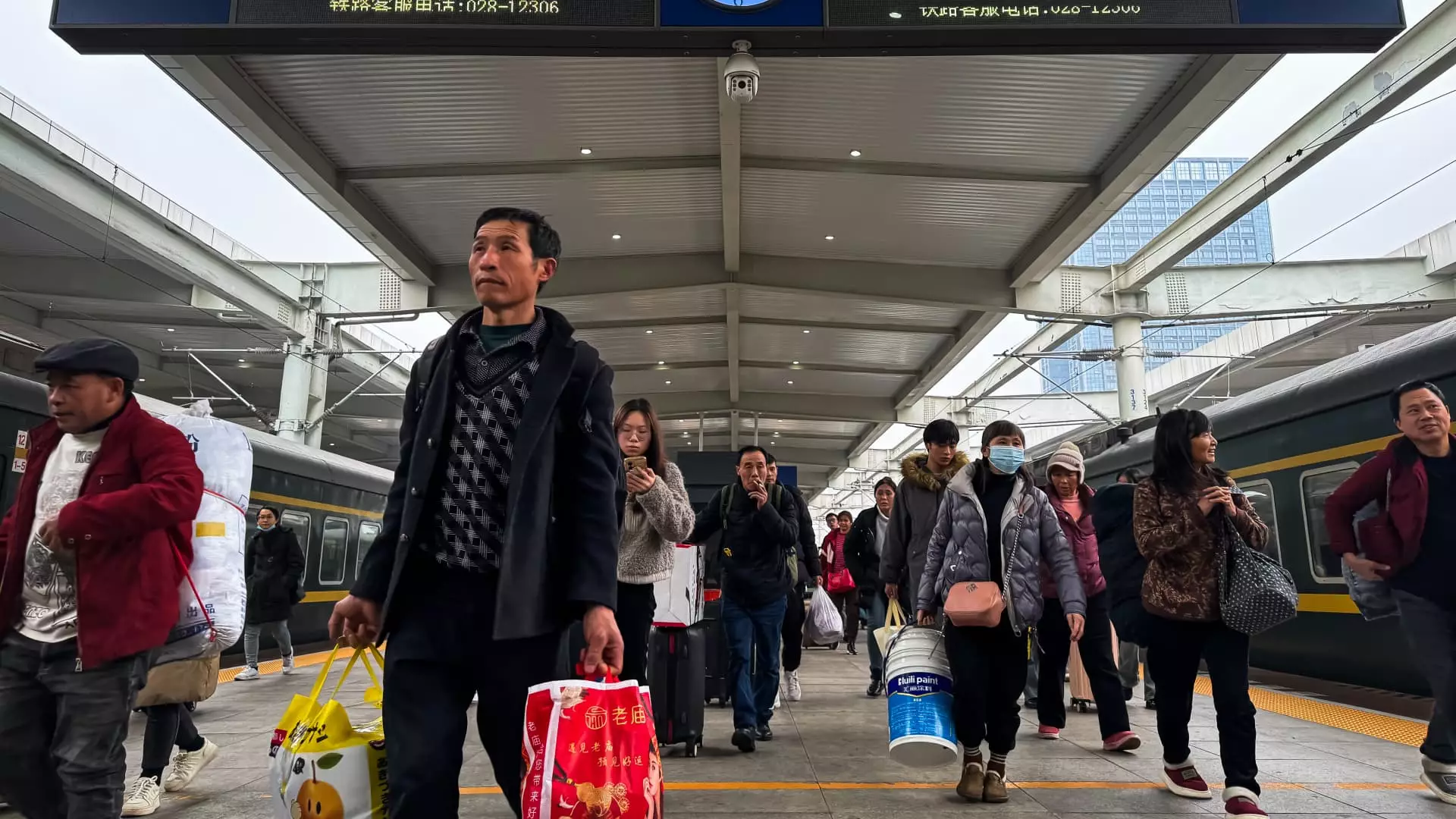As China navigates its economic landscape in early 2024, the concerns surrounding growth have intensified. Following a series of measures introduced by the government, including interest rate cuts and stimulus plans, many analysts remain skeptical about the effectiveness of these actions. The anticipated fiscal support from the government has yet to be detailed, with the country’s policymakers signaling that full plans will only be shared during the annual parliamentary meetings slated for March. This delay adds to existing anxieties among investors who have been eagerly awaiting a significant reversal in economic fortune.
The present statistics depict a troubling picture. With consumer price inflation remaining at a meager 0.5%—the slowest growth rate recorded in a decade—the urgency for concrete fiscal stimulus has become more pronounced. This sluggish growth suggests that not only is domestic consumption faltering, but foreign investments are also dwindling. As Yin Yong, the mayor of Beijing, pointed out, the city’s economic outlook is clouded by weakness in consumer spending and growth pressures in various industries.
Despite the ongoing struggles, there remains a glimmer of hope that planned stimulus measures will begin to take effect in the latter part of the year. However, experts like Mi Yang from JLL caution that the relief might be gradual. In particular, the commercial property market continues to face headwinds, with rental prices showing a marked decline—specifically, a 16% drop in high-end office space rental rates during 2024, and projections for an additional 15% fall this year.
The real estate sector, which has historically played a substantial role in China’s GDP, is at a critical juncture; past government actions aimed at curbing excessive developer debt have resulted in significant market contractions. Recent signals suggest a policy shift, with central authorities now pushing to stabilize the sector. This includes a focus on completing previously sold but unfinished projects, which holds implications for both housing availability and investor confidence.
A significant twist in China’s recovery strategy is its approach to consumer spending. Unlike Western policies during the pandemic, which involved direct cash handouts, China’s government has chosen to implement trade-in subsidies. These are designed to stimulate the economy by encouraging consumers to upgrade and recycle their appliances. While such initiatives could potentially boost certain segments of the market, analysts warn that they alone cannot solidify consumer demand in the long run.
Nomura’s Chief China Economist, Ting Lu, emphasizes that while these strategies might provide a temporary boost, they are insufficient to create a sustainable recovery. Existing pressures from weak housing sales and high inventory levels threaten to suppress related industries, such as home appliance sales, further complicating any recovery efforts.
In addition to internal economic pressures, China faces significant external challenges. Heightened tensions with the United States over trade and technology have prompted Chinese authorities to elevate the need for self-sufficiency within certain strategic sectors. This shift in policy is creating ripples among international businesses, especially within Europe, who are now being compelled to localize their operations at higher costs and diminished productivity levels.
The sentiment towards domestic security intertwined with growth initiatives has become critical in this context. Chinese officials have stressed the importance of nurturing domestic consumption, arguing that enhancing consumer capabilities will be at the forefront of policy adjustments this year. Yang Ping from the National Development and Reform Commission has also assured that the government remains committed to counteracting initial consumption spikes by sustaining support measures.
As China braces for its annual parliamentary meeting in March, expectations for a comprehensive economic strategy and fiscal support plan are mounting. The realization of significant reforms could pave a new path for invigorating the economy amidst widespread skepticism. However, the effectiveness of these measures will depend heavily on their execution and the government’s ability to balance the immediate need for stimulus with structural changes aimed at long-term economic health.
Having navigated various economic challenges in the recent past, China’s trajectory remains uncertain and layered with complexity. From consumer behavior to government intervention, investors and analysts alike will be closely monitoring developments to discern the signals of recovery or continued stagnation in this crucial economic landscape.

